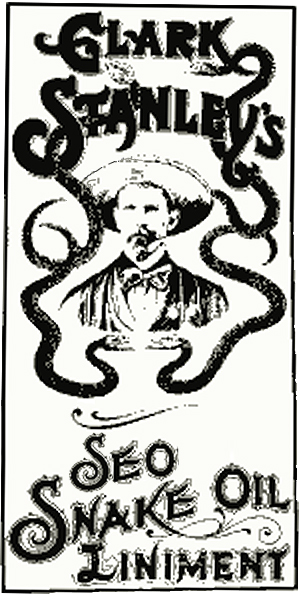
Part 2 Of a 3-Part Series.
The goal of these 3 articles is to give you an understanding of how search engines work and how you can drastically improve your search engine lead generation without wasting another dime on SEO Snake Oil.
In Part 1, we determined how to select keywords and search phrases with which we will optimize our website.
The next step is giving ourselves a proper platform from which to take off.
First one must realize that search engines don’t see your website the same way we do. Your website is written in what’s called, hyper-text markup language (a.k.a. HTML). We have browsers on our computer (Internet Explorer, Firefox, Safari etc.) that translate the HTML into graphics and readable text. Search engine spiders (or webcrawlers) ‘read’ the HTML of your site. Javascript and Flash animation are not productive for search engine optimization because spiders can’t read it; they can only read HTML. To see what a search engine actually sees, enter your domain name here.
Let’s ensure that you are being ‘read’ properly.
II. 5 Important Factors in Optimizing Your Website
for the Search Engines.
A. Meta Tags and Title
It seems that the number one SEO concern to new website owners is determining keywords. Generally what they are trying to refer to are the site’s meta tags. The two most common uses of meta tags on the Web are to provide a description and to provide meta keywords for a web page.
First let’s examine using meta tags as description. A website is made up of two parts; the header and the body. The header although not visible to us using the web browser, has the purpose of defining the site. It will define what type of HTML it’s written in, what language (i.e. english) is on the site, what the desriptive keywords of the site are and finally as a reference to any other files that the website might be using, such as cascading style sheets (CSS) and some javascript. Your meta tags as well as the title of your site, are going to tell the search engines what your site is all about.
Here is a guideline example provided by SEO-Guy.com of what a basic header should look like:
<head>
<title>A maximum of 3 keyword phrases and 55 characters</title>
<meta name=”description” content=”Many SE’s use this to describe your site so make sure you not only repeat each of your keyword phrases (max 3) at least once but make this a true representation of the page that the visitor will be viewing, and try to keep it under 255 chars”>
<meta name=”keywords” content=”Only permutations of your keyword phrases should be placed here”> (Google all but ignores this tag – No need to stuff it!)
<meta http-equiv=”Content-Type” content=”text/html; charset=iso-8859-1″>
<meta name=”robots” content=”index,follow”> (some debate whether this is necessary but it certainly does not hurt – tells robots to follow links)
</head>
B. Keyword Density
Keyword density is defined as the percentage of keywords you have written on one page, or in other words, the amount of keywords vs. the total amount of words on that page. The idea is that if you want your site to compete for the terms “San Diego Real Estate, that page better be commonly referring to real estate in San Diego. There is no exact density percentage that is going to win you a top ten seeding, but a strong percentage will ensure that you don’t apear too thin on keyword content. A good guideline for determining what density percentage is appropriate is to note is how dense with keywords the sites on the top of the search engines are.
For more info on keyword density check out KeywordDensity.com and SEOchat.com.
C. Proper HTML
 There are several other important steps that many people over look when adjusting your site structure. The first one you want to look for is the type of verbiage being used in your header tags. A header tag looks like this <h1>San Diego Real Estate</h1>. They can be any number between 1 and 6 and the number will adjust the size as well as weight of the words. Why header tags? Headers are used to lead into paragraphs and are usually going to include the keywords intended to be used in the paragraph. It is very important to make an effort to mention all of your keywords in your header tags.
There are several other important steps that many people over look when adjusting your site structure. The first one you want to look for is the type of verbiage being used in your header tags. A header tag looks like this <h1>San Diego Real Estate</h1>. They can be any number between 1 and 6 and the number will adjust the size as well as weight of the words. Why header tags? Headers are used to lead into paragraphs and are usually going to include the keywords intended to be used in the paragraph. It is very important to make an effort to mention all of your keywords in your header tags.
Next step to look for is your <img> tags. These are the pictures on your site and will look something like this <img src=”picture1.jpg” alt=”Picture 1″>. Search engines can’t see the visible pictures on your site so instead they read the name of the picture. Every picture on your site should have an ‘alt’ attribute associated with the image. And in the ‘alt’ attribute should be your keywords describing the picture. For example, of you have a picture of one of your listings in a post, you could make the ‘alt’ attribute something like “San Diego 3 Bedroom 2 Bath.” By doing both of these steps you are 1. Increasing your page density and 2. Search Engines weigh the header and alt tags heavier than normal usage of you keywords. For more information you can check out our friends at www.SEO-Guy.com.
D. Site Map
A site map is very similar to a family tree. You have your main pages of your site and then secondary and tertiary pages and your site map will define how they are all tied to together. A site map makes it easier for spiders (such as googebot) to crawl through your site. Google has a ton of webmaster information on it’s site about sitemaps and other tools you can use to better your visibility in the search engine.
E. Unique and Updated Content
Most major webdesign companies have a basic package that they sell their clients. While it is nice that you can buy a site with preloaded content so that you need not spend hours setting up your site, you must be forewarned that there are potentially thousands of other sites with the exact same content. If your site has the exact same content as others, this duplicate content is rendered virually invisible and worthless. Not only do you want unique content but you want your content to change or be added to frequently. Now whether that means daily, weekly, or monthly depends on your competition’s behavoir and the results you are looking for. The sites you choose to visit regluarly have updated information which attracts you to return and yours should be no different. I can’t stress how important it is to understand that the content of your site is what will make you excel in the search engines. A common saying reflecting this sentiment is “Content is King.” More and more we are starting to see blogs appear in the search engines as a result of thier frequently updated, unique and relevant content. The Real Estate Toamto generates about 10% of its traffic from unique searches based on combinations found within its ever growing content.
We now have our keywords and have applied them to the relevant sections of our site. The website is now set up properly according to website standards and is being updated on a regular basis with juicy information related to our keywords and search phrases. We have content that visitors will find of value and worth returning for. Next week we will learn how we can quickly gain search ranking ground by acquiring inbound links from high ranking websites to complete our optimization.
This article was authored by Jason Benesch, Director of Technology at the Real Estate Tomato.




